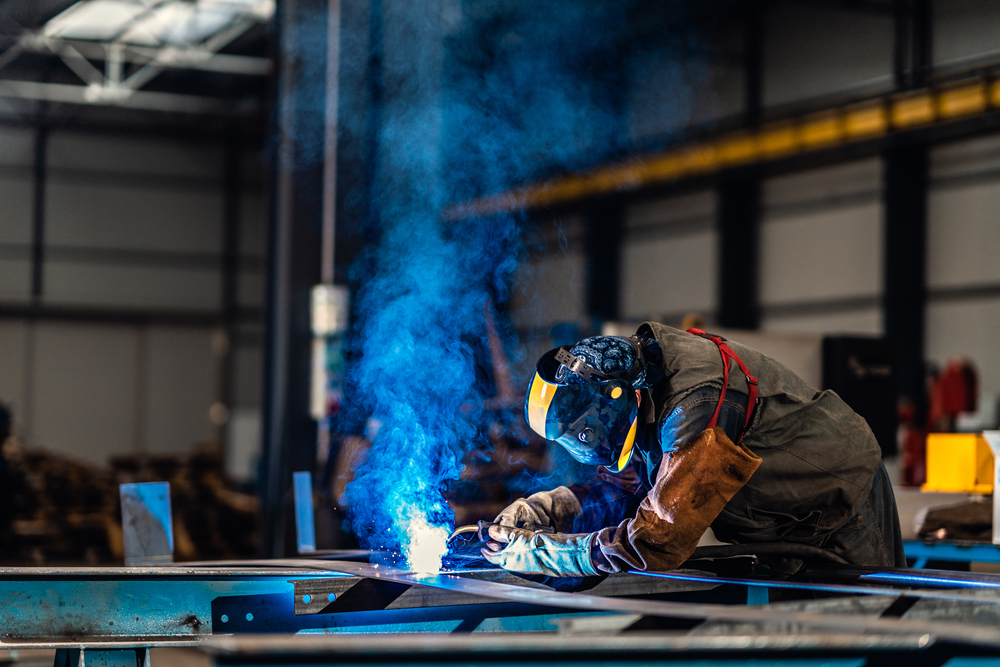7 Common Methods of Stainless Steel Fabrication
Across the world, stainless steel is an incredibly in-demand material utilised in countless industries, from construction to medical equipment to fine cutlery, given its extraordinary strength, durability, and corrosion resistance.
To make use of its unique properties, stainless steel must undergo certain fabrication processes. Fabrication involves cutting, shaping, and assembling raw materials into finished products.
In this article, our team at KNS Metals will discuss some of the most common methods of stainless-steel fabrication.
1. Work Hardening
Work hardening is a method fabricators use to strengthen stainless steel by deforming it through mechanical work, such as rolling, bending, or twisting. This process changes the material’s internal structure, making it harder and more corrosion-resistant.
Bear in mind that austenitic grades of stainless steel will only be strengthened by means of work-hardening techniques, whereas martensitic grades can also gain their strength through thermal treatments like quenching and tempering.
Work hardening can be used in conjunction with other fabrication methods to create complex shapes. The stainless steel grades with the highest work hardening rate tend to have the highest magnetic permeability (when subjected to cold working processes).
2. Metal Stamping
Metal stamping applies a die to cut and shape flat stainless-steel sheets into a specified design, often used to create complex and precise parts, such as medical equipment or electronic components. Metal stamping can be done through either hydraulic or mechanical presses, utilising a range of metal forming techniques like bending, blanking and piercing, proving a cost-effective method for producing large quantities of parts.
3. Metal Welding
Welding covers joining two or more pieces of stainless steel together using heat and pressure. Each grade of stainless steel can be welded, but they each have their own level of weldability. For example, Austenitic grades prove the most weldable, whereas martensitic grades hold a higher carbon content, meaning greater care is needed to avoid disaster. Stainless steel fabricators should therefore apply the most appropriate techniques while working.
4. Metal Punching
Metal punching creates a series of precision-placed holes and shapes in stainless steel sheets. Utilising a handle and a sharpened metal rod, this method is ideal for creating uniform holes in a sheet of stainless steel, such as in air conditioning grilles or ventilation systems. Metal punching is an affordable, accurate method for producing high volumes of parts with minimal waste.
5. Machining
Machining is a broad term that encompasses various cutting and manipulation tools to remove and restructure material from stainless steel to create a desired form, making it ideal for creating custom parts with complex shapes or dimensions. Within the process, there are a few things that need to be remembered, including:
- Machining stainless steel requires a vibration-free, sturdy machine tool with sufficient power.
- A constant feed is also necessary for proper work placement.
- You will need reliable coolants and lubricants, especially for austenitic alloys, creating considerable heat at the tool’s cutting edges.
- Larger tools can help dissipate heat during fabrication.
- Sharp cutting edges are crucial, as dull tools can lead to work hardening and glazing.
- The balance between light cuts and depth is crucial to prevent work hardening, and sufficient depth is required.
6. Soft Soldering
Fabricators use soft soldering to connect multiple pieces of stainless steel together using a low-temperature, lead-tin solder. This process is ideal for small-scale projects like jewellery or electronic components. It should be noted, however, that manufactured products destined for the food processing or transport industries should avoid lead solders.
Joints are usually weaker with soft soldering, so be mindful of using this technique for pieces requiring mechanical strength.
7. Metal Laser Cutting
As the name suggests, metal laser cutting involves using a high-powered laser to cut through stainless steel. The laser itself is directed through a series of computer numerical controls and optics to orient the beam as needed. As such, this method offers superior precision than many other stainless steel fabrication methods available and creates minimal waste.
Speak with Our Stainless-Steel Fabricators at KNS Metals for More Information Today
Stainless steel fabrication requires a high level of skill and expertise. Working with reputable and experienced fabricators who can provide the proper guidance and support throughout the process is essential. At KNS Metals, we specialise in stainless steel fabrication and have the expertise to handle all your fabrication needs.
Contact us today to learn more about our services and how we can help bring your project to life.


